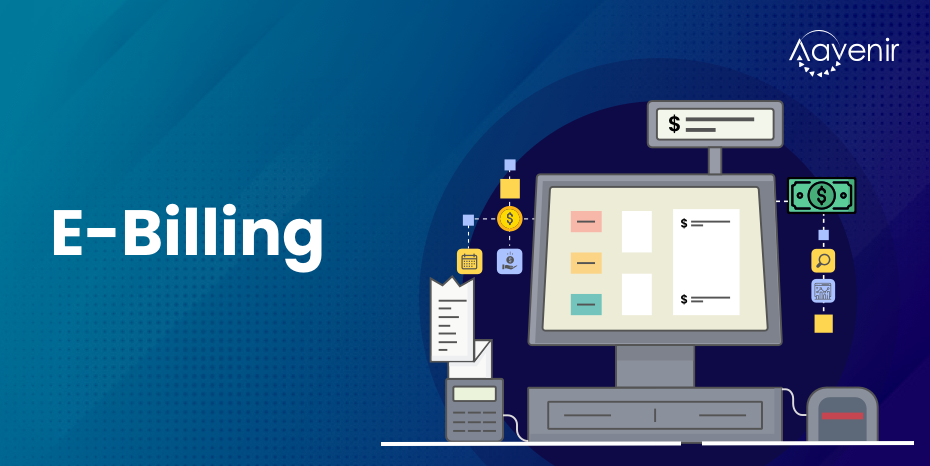What is E-Billing?- Definition
e-billing–or electronic billing–is the process of paying and receiving bills online. The electronic billing system enables customers and businesses to digitally send invoices and payments to each other, providing clear insight for each party. An e-bill is usually generated by an accounting or financial software solution and then sent to the payer by email or a web-based portal.

Understanding E-Billing
E-bills typically look a lot like paper bills. In many cases, an electronic bill is merely a digital version of the physical bill, often presented in PDF format. E-bills generally contain all pertinent information that relates to the payment, such as date, amount, due date, and payment terms. In a fully electronic billing system, the e-bill will also contain a link or instructions to access a payment portal where the bill can be viewed and settled or paid.
E-billing adds efficiency to multiple business units, ranging from accounting to customer service. E-bills are generally created by the AR department, which acts as the payee, and are paid by the AP department or the payer. E-bills make it easy for accounting personnel to balance and reconcile the books and for customer service representatives to access electronic records and resolve issues.
Benefits of E-Billing
Electronic billing improves efficiency and saves time while also reducing error rates. Historically, bills have been delivered through the mail. The process of data entry and invoice-generation, putting bills in envelopes, mailing those envelopes, and then waiting for them to be received is a very time-consuming and labor-intensive process.
While time-saving is a major benefit, the reduction of manual labor on monotonous tasks allows finance employees to focus their time on more strategic activities. The shift from paper-based to electronic bills also inherently creates better organization and results in fewer errors.
To recap, the benefits of e-billing include the following:
- Time-savings and efficiency
- Allows employees to focus on less monotonous and more strategic activities
- Error reduction
- Provides a system of record (SOR)
- System integration
Difference between E-Billing and E-Invoicing
E-billing and e-invoicing are related but not exactly the same. E-invoicing, or electronic invoicing, is a type of e-billing with a narrower definition or use case. Whereas e-billing encompasses the entire process of generating the bill and then submitting and receiving the payment, e-invoicing is generally a function of the AP workflow. The AP department, which is responsible for approving and processing supplier payments, uses e-invoicing to electronically process invoices and submit them to the system of record (generally a bookkeeping or financial solution such as an ERP or accounting software).
Explore Additional Resources to Know More

On-demand Webinar
Automate invoice coding, categorization, and data validation with PO/receipt notes for thousands of invoices.

Blog
Causes of duplicate invoices and how can your Accounts Payable team solve Duplicate Invoices.
Blog
Three biggest Accounts Payable risks to look out for – and best practices to mitigate those risks.


